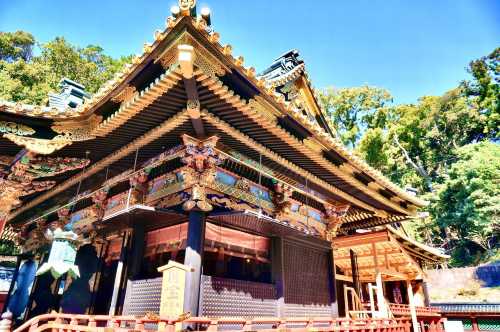Popular Trip Moments
[Shizuoka🇯🇵] A relaxing weekend trip plan for Shizuoka | [Shizuoka Prefecture] Japan's No. 1 Mount Fuji🗻 | Sashimi in Shimizu, Tokyo Suburbs - A Cut Above Tsukiji | 🌄 Hidden Tourist Attractions Shizuoka Travel, Japan's Hidden Gem! | 🇯🇵Shizuoka Stay at the artistic Hotel NoirBlanc🍷Unlimited drinking is so crazy! ) | Spring Vibes & Juice Break at Sunpu Castle Run and Refresh Station | Spring Coffee Break on the Terrace | Honest Review of Shizuoka's Local Restaurant, Kaizan | Spring Terrace Lunch at AYUKAWA Bakery & Café Restaurant | Spring Vibes at Cafe limone🍋 | Take a stroll through Miho no Matsubara! | How to truly enjoy Shizuoka! | Kunozan Toshogu Shrine: A Testament to Tokugawa Ieyasu's Legacy | [Famous Architecture of Shizuoka] (Shizuoka City, Shizuoka Prefecture, Former Province Name: Suruga) | 🌸 Spring in Shizuoka, a romantic journey through beautiful tea fields! | Shizuoka: 3-Day/2-Night Travel Guide (Highlights Edition) | Mark Real Japan Miho no Matsubara Mount Fuji Map | 8-Day Tour in Japan | Romantic Spring Itinerary | Stunning Japan Trip During Qingming Festival—Don't Miss Out! | 8-Day In-Depth Japan Itinerary for Your Next Getaway | 8-Day In-Depth Tour of Japan: A Super Detailed Guide Awaits | 8-Day Japan Itinerary: A Detailed Guide to an Unforgettable Trip | 8-Day Japan Itinerary: Your Guide to the Hottest Spots | 6-Day Japan Trip: The Perfect Time to Travel During Qingming | 8-Day Japan Itinerary: Explore the Entire Country | 6-Day Japan Trip: Indulge in a Hot Spring Getaway | Campers' dream, Mt. Fuji view camping site | [Shizuoka] Sunpu Castle 🏯 | A taste of the intersection of Tokai and Kanto! Shizuoka City [Nostalgic Bar] Denakin 🍺 | Shizuoka Bento's Grilled Bento | A Soul Food Loved by Shizuoka Citizens
Recommended Attractions at Popular Destinations
Bangkok attraction near me | Manila attraction near me | Tokyo attraction near me | Taipei attraction near me | Hong Kong attraction near me | Seoul attraction near me | Kuala Lumpur attraction near me | Los Angeles attraction near me | Shanghai attraction near me | New York attraction near me | Shenzhen attraction near me | Osaka attraction near me | Singapore attraction near me | London attraction near me | Guangzhou attraction near me | San Francisco attraction near me | Beijing attraction near me | Macau attraction near me | Bali attraction near me | Jakarta attraction near me | Paris attraction near me | Ho Chi Minh City attraction near me | Istanbul attraction near me | Phuket attraction near me | Chicago attraction near me | Seattle attraction near me | Toronto attraction near me | Orlando attraction near me | Cebu attraction near me | Chiang Mai attraction near me
Popular Attractions
Shanghai Disney Resort | Warner Bros. Movie World | SEA LIFE Kelly Tarlton's Aquarium | Baofeng Lake | Canton Tower | Starfield Library | TSS Earnslaw | Banteay Srei Temple | Gyeongbokgung Palace | The Bund | Eight Great Hutongs | Wave Rock Caravan Park | Gold Coast Sea World | The Chongsheng Temple And The Three-Pagoda Culture Tourist Area | Namsan Mountain Park | Shanghai Stadium | Li Garden | Tian Tan Buddha | De Vere Grand Connaught Rooms | Punting On The Avon (Antigua Boat Sheds) | Consorzio Forestale Lario Intelvese | Artemís Spa | Long Lake Ranch Private Community Park | Maa Sitala Manasha Temple | Line Masjid | Lake Jacksonville Park | Struna Galleries Brewster | Soccer Games Güero Mena | Kalvarienbergpark | Park Miejski
Popular Restaurants in Shizuoka
Grill & Bar Restaurant the Crossroads | Shizuokashisenhanten | Sangria, Takajo | Terrace Restaurant | Chojiya | Togakushi Soba Honten | DINING LOUNGE & BAR ARBOR/Nakajimaya Grand Hotel | Tsuruya | Hama no Kakiageya | Kawakyo | Osteria Porta Porta | No’age concentre | Gongben he'anzhishidian | SMILE Shimizuten | Kodona | Binchoh Ogiya Shizuoka SBS Tohriten | Sawayaka Shizuoka Ikeda | Quil Fait Bon Shizuoka | ATO | Nihonryourikarin | SUMIBI FRENCH SINQ | Nakotei | La Avenir | Simples | Linka | Bar & Lounge Email | Cyakkiriya | Teppanyakikeyaki | Bakagai | Abekawa-no Hotori Shiki-no Sachi Edokoma
Popular Ranked Lists
Popular Best Things to Do in Pingxiang | Popular Premium Hotels in Fahaheel | Top 6 Local Restaurants in Zhengding | Top 10 Local Restaurants in Nan'ao | Popular Premium Hotels in Wayne County | Popular Best Things to Do in Yangquan | Top 3 Best Things to Do in Chizhou | Popular Luxury Hotels Near Akhaltsikhe | Popular Local Restaurants in Anqing | Popular Best Things to Do in Shaoyang | Top 5 Best Things to Do in Yongzhou | Top 6 Local Restaurants in Lishui | Popular Best Things to Do in Nanchong | Top 10 Local Restaurants in Jiande | Popular Luxury Hotels Near Nassau | Top 3 Local Restaurants in Mile | Top 10 Local Restaurants in Youyang County | Popular Premium Hotels in La Quinta | Popular Luxury Hotels Near Maggona | Top 4 Local Restaurants in Xianyang | Top 10 Local Restaurants in Shangri-La | Top 3 Best Things to Do in Linxia Prefecture | Popular Premium Hotels in Mobile County | Popular Premium Hotels in En Gev | Popular Luxury Hotels in Malargue Department | Popular Premium Hotels in Karagandy | Top 10 Local Restaurants in Emeishan | Popular Luxury Hotels Near Fell Lapland | Popular Local Restaurants in Xiaojin | Top 10 Local Restaurants in Linhai
Payment Methods
Our Partners
Copyright © 2025 Trip.com Travel Singapore Pte. Ltd. All rights reserved
Site Operator: Trip.com Travel Singapore Pte. Ltd.
Site Operator: Trip.com Travel Singapore Pte. Ltd.



















